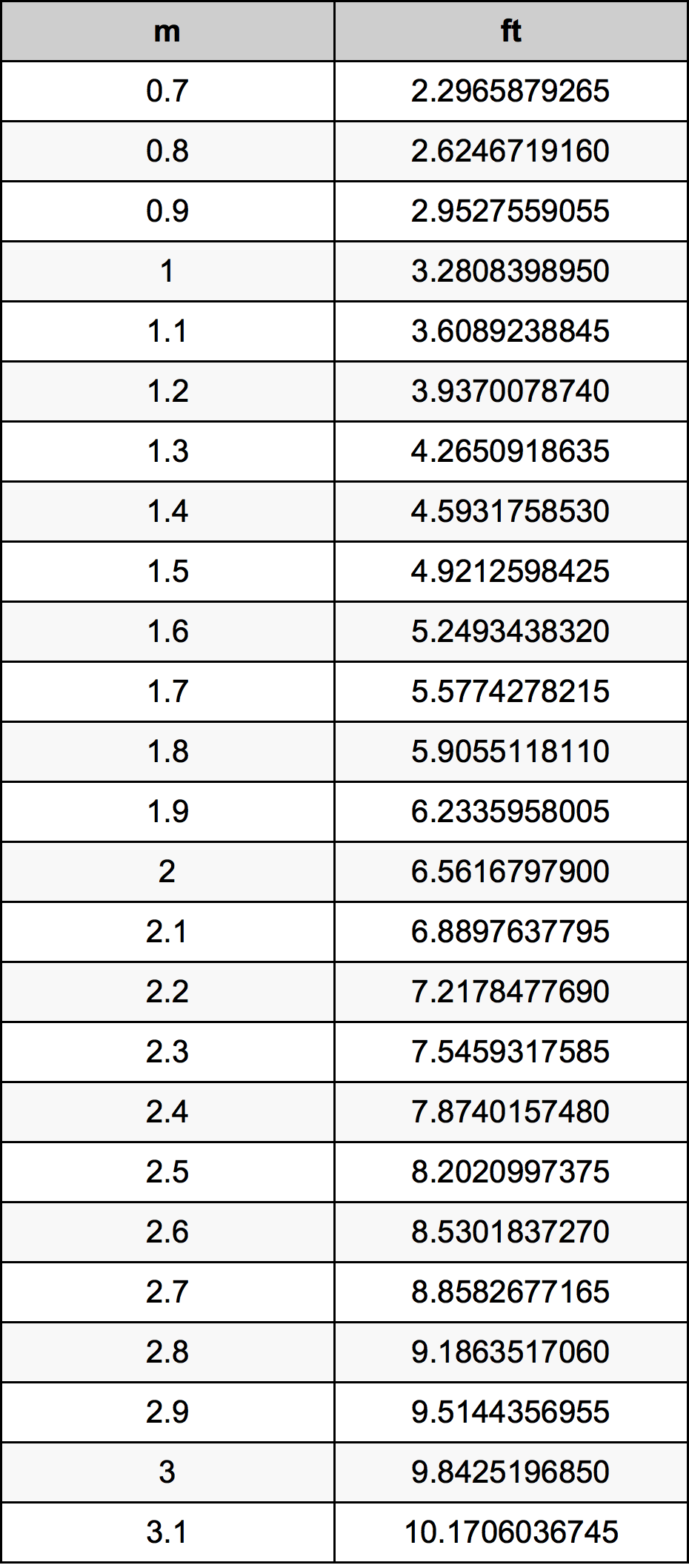Unveiling the Conversion Process Of 1.9 Meters to Feet
1. Introduction to Metric and Imperial Units:
The metric system and the imperial system represent two distinct measurement systems, each widely used in different parts of the world. Converting 1.9 meters to feet involves transitioning from the metric unit (meters) to the imperial unit (feet), necessitating a clear understanding of the conversion factor between the two.
2. Fundamental Conversion Factor: Meters to Feet:
The fundamental conversion factor between meters and feet is established by recognizing that 1 meter is equivalent to approximately 3.28084 feet. This factor serves as the linchpin for converting any distance or length measurement between the two systems.
3. Applying the Conversion Factor: The Formula:
To convert 1.9 meters to feet the conversion formula is straightforward: multiply the given length in meters by the conversion factor (1 meter = 3.28084 feet). Mathematically, this translates to 1.9 meters * 3.28084 feet/meter.
4. Performing the Calculation: Transforming Meters to Feet:
Executing the calculation (1.9 * 3.28084), the result is approximately 6.2336 feet. Therefore, 1.9 meters is equivalent to approximately 6.2336 feet.
5. Rounding for Practicality: Precision in Measurement:
While the precise conversion yields 6.2336 feet, practicality often calls for rounding to a more manageable figure. Rounded to one decimal place, the converted length becomes 6.2 feet, providing a more user-friendly representation.
Convert 1.9 m to common lengths
| Unit | Length |
|---|---|
| Nanometer | 1900000000.0 nm |
| Micrometer | 1900000.0 µm |
| Millimeter | 1900.0 mm |
| Centimeter | 190.0 cm |
| Inch | 74.8031496063 in |
| Foot | 6.2335958005 ft |
| Yard | 2.0778652668 yd |
| Meter | 1.9 m |
| Kilometer | 0.0019 km |
| Mile | 0.0011806053 mi |
| Nautical mile | 0.0010259179 nmi |
1.9 Meter Conversion Table

6. Understanding the Context: When to Use Each System:
Recognizing when to use the metric or imperial system is crucial for seamless communication in various fields. While the metric system is prevalent in scientific and international contexts, the imperial system remains standard in many day-to-day applications in the United States and a few other countries.
7. Real-World Application: Visualizing 1.9 Meters in Feet:
To grasp the practical implications of the conversion, envisioning 1.9 meters in feet can be insightful. It is akin to visualizing a height, a measurement, or an object’s length in the imperial system, fostering a tangible connection between the two units.
8. Educational Insights: Teaching Metric to Imperial Conversion:
Understanding the conversion process contributes to educational proficiency, especially for students navigating the intricacies of different measurement systems. It instills a foundational understanding of mathematical principles and prepares individuals to work seamlessly with diverse units of measurement.